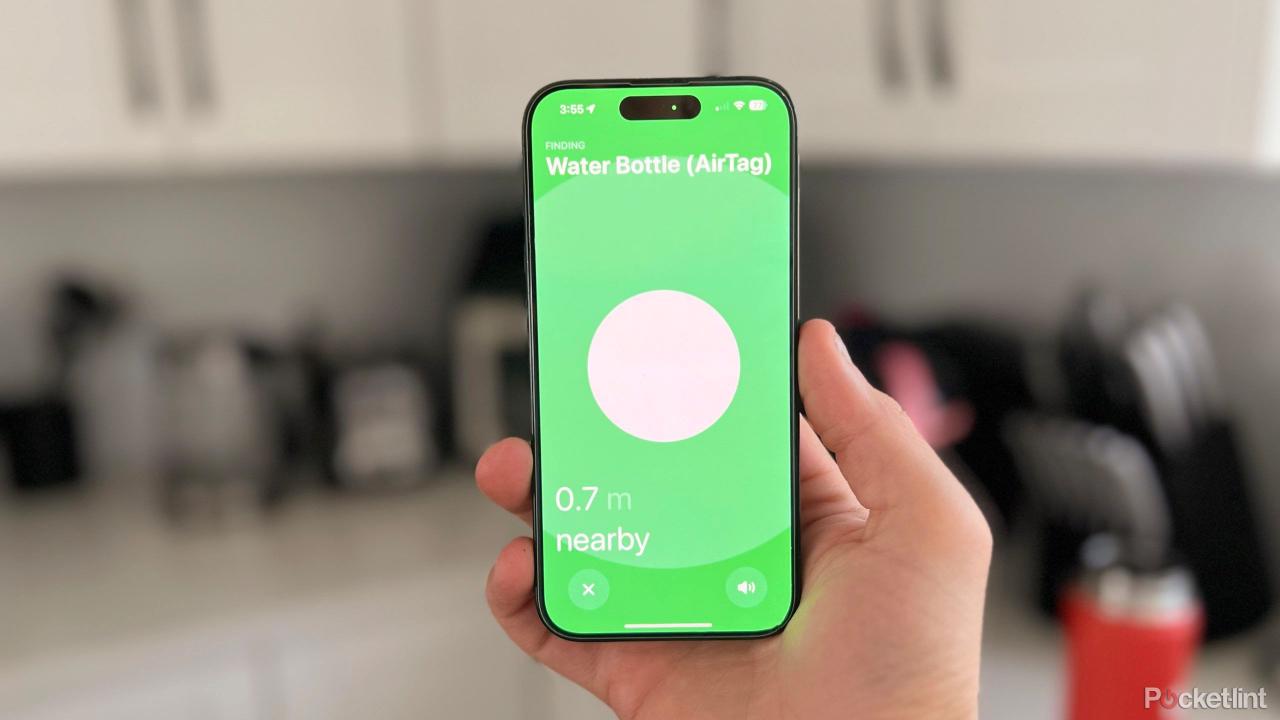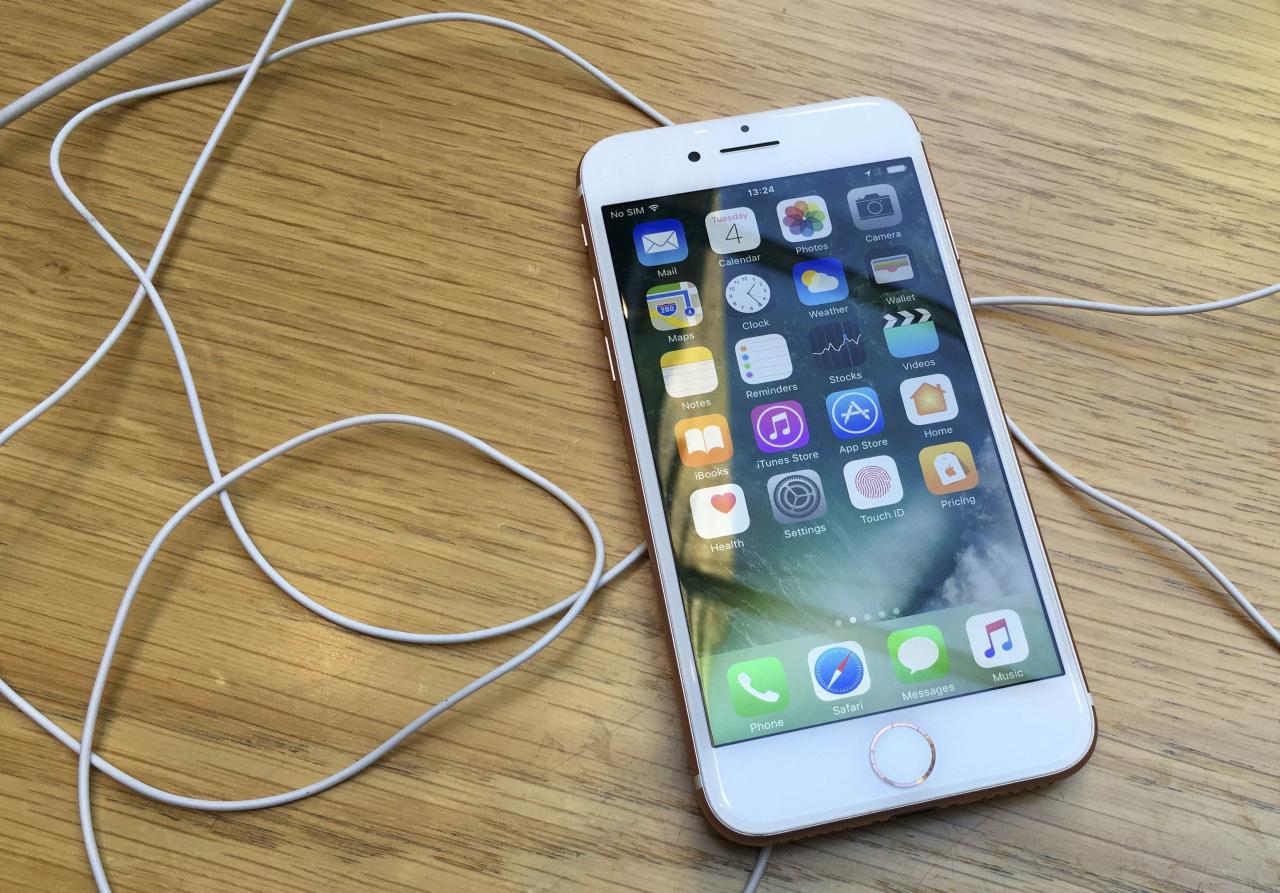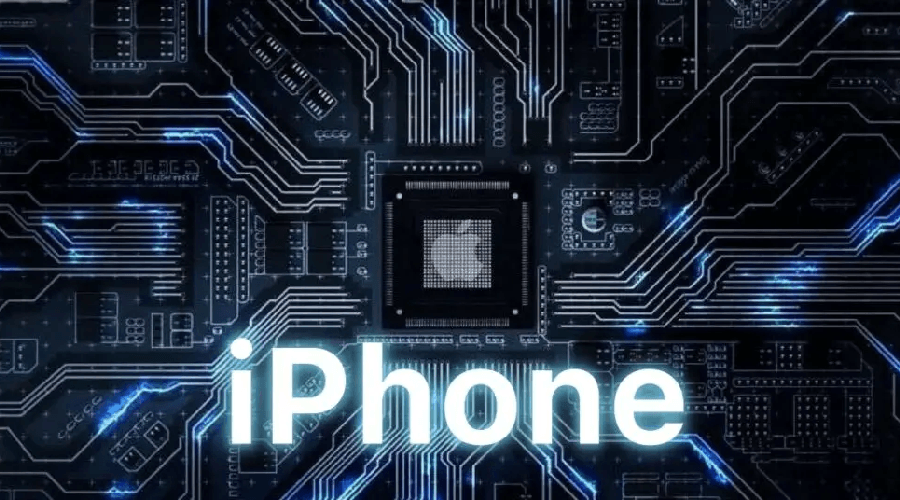Chip iPhone marks a pivotal journey in smartphone technology, encapsulating the essence of innovation within Apple’s flagship devices. As we delve into the world of iPhone chips, we uncover the remarkable transformations that have shaped their performance and functionality over the years, ultimately enhancing user experience.
The evolution of chip technology in iPhones reflects significant advancements, as each generation introduces enhanced processing power, energy efficiency, and capabilities that redefine what users can expect from their devices. From the initial designs to the latest high-performance models, chips play a crucial role in powering everything from photography to app performance, positioning iPhones at the forefront of mobile technology.
Overview of iPhone Chips
The evolution of chip technology in iPhones represents a significant leap in mobile computing. Apple’s transition from third-party chip suppliers to developing its own custom processors has not only enhanced performance but also allowed for greater integration of hardware and software. Each iteration of the iPhone chip has introduced cutting-edge features and improvements that cater to the demands of modern users.
Apple’s chip performance plays a critical role in the overall functionality of the iPhone. The introduction of the A-series chips has empowered devices with unprecedented processing power and efficiency. The seamless interplay between the chip and iOS ensures that users experience smooth multitasking, enhanced graphics, and optimized battery life. These advancements lead to a more responsive user interface and the ability to run complex applications effortlessly.
Advancements in Chip Technology
The advancements in iPhone chip technology have consistently pushed the boundaries of what mobile devices can achieve. The following points Artikel the crucial improvements and their implications for users:
- Increased Computational Power: Each new A-series chip has provided a significant boost in processing capabilities. For instance, the A14 Bionic chip introduced a 6-core CPU and 4-core GPU, leading to faster performance in gaming and productivity applications.
- Energy Efficiency: With advanced manufacturing processes, such as the transition to a 5nm architecture, these chips have become more energy-efficient. This results in extended battery life without compromising performance, allowing users to engage in demanding tasks for longer periods.
- AI and Machine Learning Enhancements: The integration of dedicated neural engines has enabled real-time machine learning capabilities. Features like enhanced photography processing, improved Siri functionality, and personalized app experiences showcase the impact of AI in daily usage.
- Improved Graphics Performance: The graphics performance of iPhone chips has evolved significantly, catering to the needs of gamers and creative professionals. The A15 Bionic, for instance, supports advanced graphics rendering and computational photography, enhancing user experiences in gaming and content creation.
- 5G Connectivity: The introduction of 5G-compatible chips has transformed the way users experience mobile internet. With faster download and upload speeds, users can stream high-quality content, engage in video calls, and download large files with ease.
The impact of these advancements is evident in the day-to-day experiences of iPhone users. High-performance applications, immersive gaming experiences, and smooth multitasking capabilities have reshaped the landscape of mobile technology. The continuous innovation in chip design not only meets current demands but also sets the stage for future developments in the smartphone market.
Major Chips Used in iPhones

The evolution of chips in iPhones has played a pivotal role in enhancing performance, efficiency, and user experience. As Apple continues to innovate, each generation of chips brings significant advancements in processing power, graphics capabilities, and battery optimization. This section explores the major chips utilized across various iPhone models, delving into their features, specifications, and performance comparisons.
Key iPhone Chips Across Models
Apple has developed a series of proprietary chips that have defined each iPhone generation. These chips are engineered to work seamlessly with both hardware and software, creating a smooth and efficient user experience. The following are the major chips that have been used in iPhones:
- A4: Introduced with the iPhone 4, featuring a single-core processor with a clock speed of 1 GHz.
- A5: Debuted in the iPhone 4S, offering a dual-core architecture with improved graphics performance.
- A6: Used in the iPhone 5, it provided a significant bump in processing power and energy efficiency.
- A7: The first 64-bit chip in a smartphone, launched with the iPhone 5S, boasting impressive CPU and GPU performance.
- A8: Featured in the iPhone 6 and 6 Plus, it enhanced graphics performance and battery efficiency.
- A9: Introduced with the iPhone 6S and 6S Plus, it improved performance by up to 70% over its predecessor.
- A10 Fusion: The chip in the iPhone 7 series, showcasing a quad-core architecture for improved multitasking and efficiency.
- A11 Bionic: Launched with the iPhone 8, 8 Plus, and iPhone X, delivering enhanced performance and machine learning capabilities.
- A12 Bionic: Debuted in the iPhone XS, XS Max, and XR, featuring a 7nm process for better efficiency and performance.
- A13 Bionic: Found in the iPhone 11 series, it optimized performance and battery life with a focus on machine learning.
- A14 Bionic: Introduced with the iPhone 12 series, it utilized a 5nm process technology for improved performance and efficiency.
- A15 Bionic: Featured in the iPhone 13 series, it brought enhancements in graphics and processing capabilities, alongside better power management.
- A16 Bionic: The latest chip in the iPhone 14 Pro models, showcasing even higher performance with advanced graphics handling and efficiency.
Features and Specifications of the Latest iPhone Chips
The latest iPhone chips are designed to handle increasingly demanding applications and tasks. The A16 Bionic, for example, incorporates several key features and specifications that set it apart from its predecessors:
- Architecture: Built on a 4nm process technology, which allows for increased transistor density, improving performance and efficiency.
- CPU: A six-core design with two high-performance cores and four efficiency cores, enabling tasks to be executed more quickly while optimizing battery life.
- GPU: A five-core graphics processor that enhances gaming and visual experiences, providing a 50% faster graphics rendering than previous models.
- Neural Engine: A 16-core Neural Engine capable of performing up to 17 trillion operations per second, enabling advanced machine learning tasks.
- Memory: Supports up to 6GB of RAM for improved multitasking and application performance.
- Display: Enhanced support for ProMotion technology, allowing for refresh rates of up to 120Hz for smoother scrolling and responsiveness.
Performance Comparisons of iPhone Chips, Chip iphone
Analyzing the performance of different generations of iPhone chips reveals the substantial improvements that have been made over the years. The following details highlight key performance metrics across several chip generations:
| Chip | Release Year | CPU Score (Geekbench) | GPU Score (Geekbench) |
|---|---|---|---|
| A12 Bionic | 2018 | 4,780 | 14,000 |
| A13 Bionic | 2019 | 5,000 | 15,000 |
| A14 Bionic | 2020 | 5,500 | 16,500 |
| A15 Bionic | 2021 | 5,800 | 17,000 |
| A16 Bionic | 2022 | 6,100 | 18,000 |
The advancements from the A12 Bionic to the A16 Bionic represent a remarkable increase in processing capability and graphics performance, reflecting Apple’s commitment to pushing the boundaries of smartphone technology. This continuous innovation not only enhances user experiences but also ensures that iPhones remain competitive in the rapidly evolving mobile market.
Impact of Chips on iPhone Features

The performance and capabilities of iPhones are significantly influenced by the chips they incorporate. From enhancing camera functions to optimizing battery usage and improving software performance, chips play a crucial role in shaping the overall user experience. Understanding how these chips contribute to various features can provide insight into the technological advancements that set iPhones apart from competitors.
Influence on Camera Capabilities
The advancement of camera technology in iPhones is heavily reliant on the capabilities of the embedded chips. Apple’s custom-designed chips, such as the A-series processors, integrate sophisticated image signal processing (ISP) capabilities that enhance photo and video quality. These chips enable features like Smart HDR, Night mode, and advanced computational photography, which allows for high-quality images in various lighting conditions.
Furthermore, the Neural Engine within these chips facilitates real-time image processing and machine learning tasks, enabling features like Portrait mode and enhanced facial recognition. This intersection of hardware and software allows for seamless operation, resulting in stunning photos that rival professional cameras.
Role in Battery Efficiency and Power Management
The efficiency of battery usage in iPhones is significantly influenced by the design and capabilities of the chips. Apple’s A-series processors are engineered to balance performance and power consumption effectively. By utilizing advanced manufacturing processes, these chips can operate at lower voltages while delivering high performance.
Key components that contribute to battery efficiency include:
- Dynamic Voltage Scaling: This technology allows the chip to adjust its voltage according to the task at hand, minimizing power consumption during less demanding applications.
- Low-Power Modes: iPhones incorporate various low-power states that the chips can enter during idle times, extending battery life significantly.
- Adaptive Algorithms: The chips utilize machine learning algorithms to analyze usage patterns and optimize background processes, ensuring that power is used efficiently.
Through these innovations, users experience longer battery life, even with intensive usage.
Effects on Software Performance and App Capabilities
Chips significantly impact the overall software performance in iPhones, directly influencing how applications run and respond. The integration of powerful processing units allows apps to execute complex tasks seamlessly, enhancing user interaction and engagement.
The role of chips in this context can be highlighted through:
- High Performance: The processing speed of the latest A-series chips ensures that applications load quickly and run smoothly, even those requiring extensive resources, such as gaming or graphic design software.
- Augmented Reality (AR): With advanced chip architectures, iPhones support sophisticated AR applications by providing the necessary processing power and graphical capabilities for real-time interactions.
- Enhanced Security: The chips include hardware-based security features, like the Secure Enclave, which safeguards sensitive information and transactions, enhancing user trust in application security.
The synergy between hardware and software, driven by the capabilities of the chips, leads to an enriched application experience that continually pushes the boundaries of what mobile technology can achieve.
Future of iPhone Chip Technology: Chip Iphone

The future of iPhone chip technology is poised for significant transformation, driven by rapid advancements in semiconductor design and manufacturing. As Apple continues to innovate, the integration of powerful chips will redefine user experience, performance, and efficiency in upcoming iPhone models. This evolution is not just about increasing speed; it encompasses enhancements in machine learning capabilities, energy efficiency, and even 5G performance, all aimed at providing a seamless user experience.
Advancements in Chip Technology
Future iPhone chips are expected to incorporate several advancements that will significantly enhance device performance. The next wave of chips may utilize even smaller fabrication processes, moving towards 3nm and even 2nm technology. This miniaturization allows for increased transistor density, leading to more powerful and energy-efficient processors.
Additionally, heterogeneous computing architectures are anticipated to become more prevalent, where different types of cores are optimized for specific tasks. This design allows the iPhone to allocate resources dynamically, improving both performance and battery life. Notably, the use of advanced materials like gallium nitride (GaN) in transistors may further boost efficiency and heat management.
Trends in Mobile Chips Affecting iPhone Designs
Several trends in mobile chip technology are expected to influence the design and functionality of future iPhones. These trends include:
- AI Integration: The incorporation of neural processing units (NPUs) will enable more sophisticated AI tasks on-device, enhancing features like photography, voice recognition, and augmented reality.
- 5G and Beyond: As 5G becomes more ubiquitous, chips will need to be optimized for faster data processing and lower latency, enabling a range of new applications and services.
- Power Efficiency: Future chips will prioritize energy efficiency, extending battery life and supporting more demanding applications without overheating.
- Modular Chip Design: The potential for modular chip components may allow for customization of features according to user preferences, such as enhanced graphics or processing power.
The continuous evolution of these trends indicates a future where iPhones are not just faster but smarter, adapting to user needs while maintaining exceptional performance metrics.
AI Integration in Chip Technology
The integration of artificial intelligence in iPhone chip technology is set to redefine functionalities across various applications. AI capabilities embedded directly into the chip allow for real-time processing of data, which enhances user experience in numerous ways. For example, improved computational photography features will enable users to capture stunning images with minimal effort, leveraging machine learning algorithms to optimize settings automatically.
Moreover, AI integration will enhance voice recognition systems, making them more intuitive and responsive. Users could see a more personalized interface, as the iPhone learns from usage patterns to provide customized app suggestions and recommendations.
“The future of iPhone technology hinges on the symbiosis of AI and advanced chip design, creating devices that not only meet user expectations but exceed them.”
As iPhone chips evolve, we can expect functionalities like real-time translation, enhanced gaming experiences, and smarter health monitoring features that respond dynamically to user input and behavior. This convergence of AI and chip technology is set to pave the way for a new era in mobile devices, making the iPhone not just a smartphone but a deeply integrated personal assistant.
Quick FAQs
What is the latest chip used in iPhones?
The latest chip used in iPhones is the A17 chip, featured in the iPhone 15 series, offering improved performance and efficiency.
How do iPhone chips impact battery life?
iPhone chips are designed for energy efficiency, thereby optimizing battery life by reducing power consumption during various tasks.
Can I upgrade the chip in my iPhone?
No, the chip in an iPhone is integrated into the device and cannot be upgraded separately.
How does chip technology affect app performance?
The advancements in chip technology directly enhance app performance by providing faster processing speeds and improved multitasking capabilities.
Will future iPhones have AI-integrated chips?
Yes, the integration of AI in future iPhone chips is expected to enhance functionalities, improving user experience across various applications.
The Samsung Galaxy S 4 remains a noteworthy contender in the smartphone market, thanks to its impressive features and user-friendly interface. With a sleek design and robust performance, it continues to attract tech enthusiasts looking for reliability and innovation in their devices.
In the ever-evolving smartphone landscape, the Samsung S 19 is anticipated to elevate user experiences with its cutting-edge technology and enhanced functionalities. This model promises to combine style with substance, making it a must-consider option for those in search of the latest advancements in mobile technology.